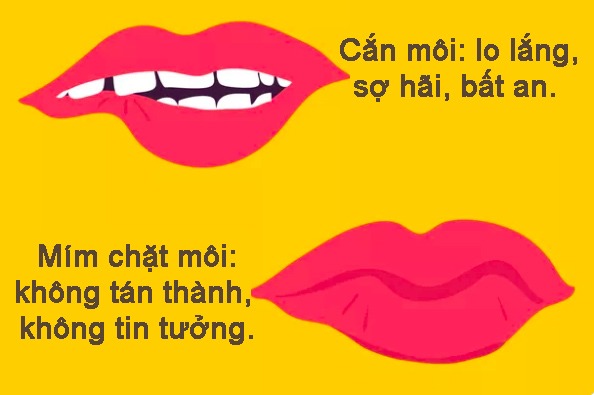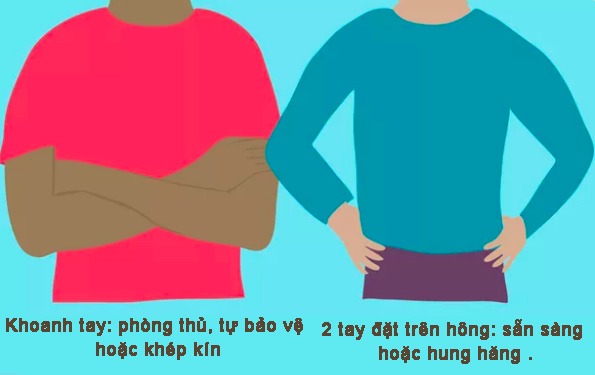Facial expression

A smile can indicate approval or happiness. A frown can signal disagreement or displeasure. In some cases, our facial expressions can reveal our true feelings about a particular situation. You say you’re fine, but the look on your face can tell people otherwise.
Some examples of emotions that can be expressed through facial expressions are: happiness, sadness, anger, surprise, disgust, fear, bewilderment, excitement, longing, contempt.
A person’s facial expression can also help us determine if that person believes what he or she is hearing. One study found that the most believable facial expressions were a slight raised eyebrow and a slight smile. This expression also conveys a message of friendliness and confidence.
Research also suggests that we can judge a person’s intelligence based on their face and expressions. Accordingly, people with narrower faces and clearer noses are generally considered to be more intelligent. Happy, smiling people were also rated as more intelligent than angry people.
Eyes
The eyes are often considered the “window to the soul” because they have the ability to reveal a lot about how a person is feeling or thinking. As you talk to others, note eye movements. Some common things you might see are whether someone is making direct eye contact, the direction of their gaze, how much they are blinking, or whether their pupils are dilated.
When assessing body language, pay attention to the following eye signals:
Eyes
When a person looks you straight in the eye during a conversation, it shows that they are interested. However, making eye contact for long periods of time can make you feel threatened and avoiding eye contact, frequently looking away, can indicate that the person is distracted, uncomfortable, or trying. Try to hide your true feelings.
Blink of an eye
Blinking is natural, but when a person blinks too much or too little, you should pay attention.
We often blink faster when feeling distressed or uncomfortable. Meanwhile, someone who blinks less is intentionally controlling their eye movements (For example, a poker player may blink less to intentionally appear unenthusiastic about the hand being dealt).
Pupil size
Pupil size can be a very subtle nonverbal communication signal. In addition to the level of light in the environment, emotions can cause pupil size to change.
Example: When you are attracted to someone, your pupils dilate.
Mouth

Expressions and mouth movements are also very helpful when you read other people’s body language. For example:
A person who is constantly biting their lower lip may be experiencing feelings of anxiety, fear, or insecurity.
They may cover their mouths to be more polite when yawning or coughing and may also be an attempt to cover a frown of disapproval.
Smiling is perhaps one of the greatest body language signals, but a smile can also be interpreted in many different ways. That smile can be genuine or created to show fake happiness, sarcasm, or even mockery.
To understand someone through body language, pay attention to the following oral cues:
Tight lips can be a sign of distaste, disapproval, or distrust.
Lip biting usually happens when someone is nervous, restless, or stressed.
Covering the mouth can be a sign that someone wants to hide an emotional reaction.
Hand gesture
This is possibly the most direct and obvious body language signal. The following examples are a few common gestures and their possible meanings (depending on culture):
A clenched fist can indicate anger in one situation or solidarity in another.
Thumbs up or down are often used in place of approval and disapproval gestures.
The “Ok” gesture is done by touching the thumb and index finger together in a circle while extending the remaining 3 fingers can be interpreted as “yes”, “okay”. However, in some parts of Europe the same signal is used to imply you are nothing, and in some South American countries this symbol may be seen as a vulgar gesture.
Arms and legs

Arms and legs can also convey nonverbal messages. When conversing, pay attention to some arm and leg cues like these:
Crossed arms can indicate a person is defensive, self-protective, or closed.
Standing with your hands on your hips can be a sign that the person is ready or it can also be a sign of aggression.
Clasping their hands behind their back can indicate that the person is bored, worried, or even angry.
Fingers that don’t stop tapping can be a sign that a person is bored, impatient, or frustrated.
Crossed legs can reveal that a person needs privacy.
Posture
The way we hold our bodies is also an important part of body language. Different poses can convey different information about a person’s feelings as well as hints about personality traits (such as confidence, openness, or submission).
When a person is sitting upright, he or she may be concentrating and paying attention to what is going on. Meanwhile, stooping and leaning forward can indicate that the person is lethargic and bored. When a person is in a comfortable position with open, exposed limbs, that person is very friendly and open. Meanwhile, the closed posture when someone hides their torso by stooping forward, crossing their arms and legs can be a sign of hostility, unfriendliness, and anxiety.
at Blogtuan.info – Source: Eva.vn – Read the original article here



